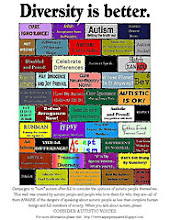Puppy Training:- a brief summary
Hosted by "Tracy" at "Mother May I," but the photo-picture below will whizz you right there with one click.
I attend the primer.
A two hour lecture.
I did try very hard not to yawn.
• Consistency
• Persistence
• Always follow through
• Think like a dog
• Use logic
• Dogs have common dogginess principles
• Each dog has it’s own unique personality and character
• Keep language concise
• Use body language
• Use simple signs
• Generalize skills in different locations
• Reward with treats initially
• Don’t forget to fade rewards
• Pick your battles
• Schedules, routines and predictability
• Never punish natural doggy behaviour such as chewing, digging and barking
• Provide safe opportunities to chew, dig and bark
• Tone of voice
• Facial expression
• Repetition
On and on and on it goes……..
And do you know what? I can do all this standing on my head, whilst knitting and drinking Ensure. I tell you truly that if I had known it would be this easy, I would have found a dog years ago. Then again, years ago, I didn’t know, what I know now. Do I mean to imply that Autistic children learn similarly to dogs? No. I imply no such thing. On the contrary, children, both autistic and typical, need good teachers. It is easy to scoff, especially since I am so exceptionally good at scoffing:- why doesn’t everyone already know all this stuff? But we all have to start somewhere. This provides me with the perfect opportunity to thank those professional and vocational professionals who work tirelessly for my children, to help them reach their full potential. If I cannot learn to be a good teacher, then children are probably not a good career choice for me. Luckily, despite all the odds against me, it seems that old dogs like me really can learn new tricks. Other young pups master nauseous chalk when they have just the right motivation.
Woof!

Don't forget to keep your eyes and ideas open to "Jessica."






